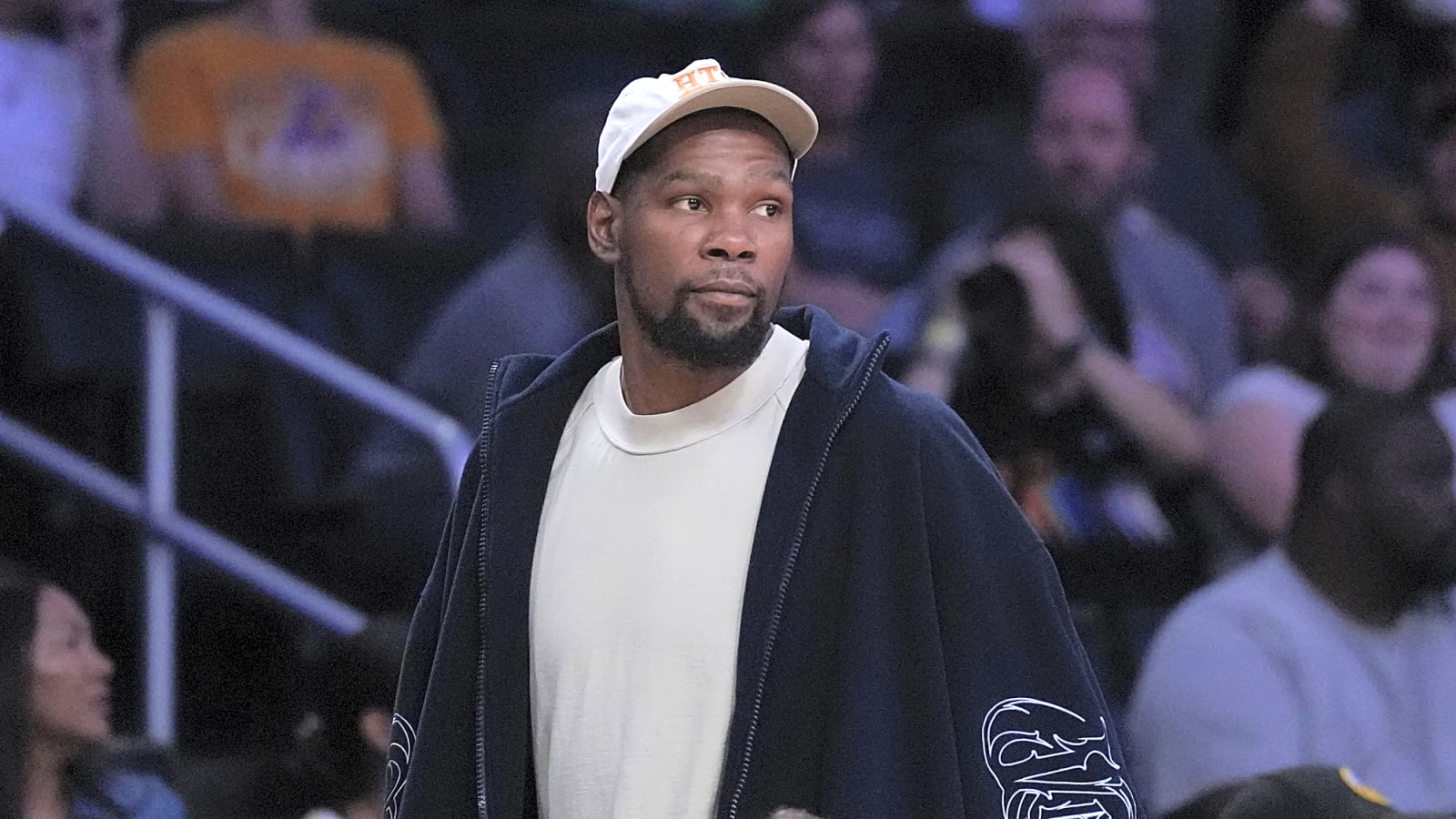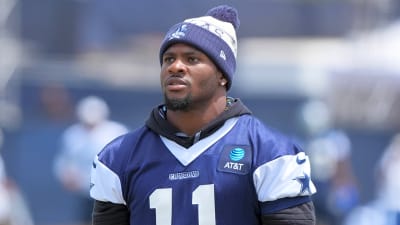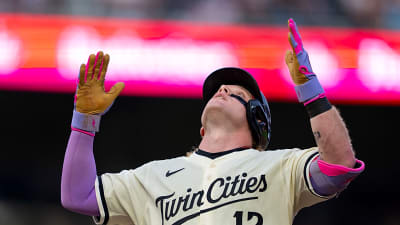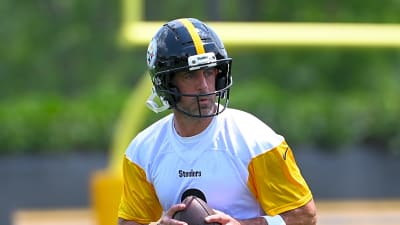
Kevin Durant’s appearance on LeBron James’ podcast, Mind the Game, caught the attention of millions of people, including his former teammate, Kyrie Irving.
He watched as Durant delved into their time with the Nets, outlining why he believes the superteam failed, and what he wishes could have been done differently.
Irving, now a part-time streamer while rehabbing his ACL, couldn’t resist the urge to share his thoughts on the matter.
lol I am gonna address this on my stream soon https://t.co/xAxBcCTln7
— Kyrie
(@KyrieIrving) July 16, 2025
Shift to the Digital Age
Decades ago, NBA players didn’t have a platform to share their own stories. Post-game interviews and stories by journalists covering the NBA were the primary methods of hearing players’ thoughts off the court. Misconceptions and rumors spread like wildfire, even more so as social media continued to evolve.
Players were forced to live with the labels that the public had attached to them. Traditional media served as a gatekeeper for what information was and wasn’t released. In other words, they controlled players’ narratives.
Those days are no longer the same, thanks to a new wave of digital media. Player streams and podcasts have become increasingly popular in the last several years, largely due to athletes’ desires to reclaim their narratives.
That’s why, when Irving saw that clip of Durant telling his side of what went down in Brooklyn, he knew he could do the same. He didn’t need to wait for a reporter to write a story about him, or even to be invited on a podcast. He could address himself on one of his streams.
Emergence of the Podcast World
In the podcast realm, JJ Redick is widely regarded as one of the early pioneers. Redick started two podcasts— “The Vertical Podcast” in 2016, which was acquired by the Ringer NBA, and most notably, “The Old Man and the Three” in 2020. He was the first active NBA player to host a podcast while playing.
His 76ers teammate, Jimmy Butler III, guest-starred on both his podcasts: first on The Ringer and then on The Old Man and the Three. The two went in-depth about why Butler left Minnesota and, eventually, Philly, his infamous Timberwolves practice, and how the narratives surrounding Butler shaped the public’s perception of him.
Butler doesn’t partake in many podcasts or interviews, which is what made those appearances so significant.
He could trust JJ. He didn’t have an ulterior motive, nor was he looking to smear Butler’s reputation to create a headline. This made it easier for Butler to open up and disclose never-before details about what went down behind the scenes.
“Everybody was like, ‘Why did he wait?” Butler said, referring to rumors that he waited until days before training camp to request a trade from Minnesota. (15:20)
“That’s not what happened,” he refuted.
“It’s always, ‘a source said’, it’s never ‘Jimmy Butler said.’”
Setting the Record Straight
This time, it was a “Jimmy Butler said” because he set the record straight. Redick even got him to open up about the notorious Timberwolves incident, in which he dominated practice with the third-string unit. Then, he proceeded to do an interview with Rachel Nichols after a defiant argument with the team.
“The most interesting detail of that whole scrimmage nobody knows: I only shot the ball once,” he revealed. (26:45)
Butler went on to dispel the notion that the interview following practice was a PR stunt that had been planned. According to him, he’d already been scheduled to have a sit-down with Nichols for that day.
“I had the interview set up three weeks ago for that night. Now, when it (details of the practice) broke, Rachel was like, “You know, we got to talk about this now.” (25:21)
The relaxed setup of chatting with one of his peers, and even drinking wine together, makes what is essentially an interview, carry more like a conversation. This makes it easier to open up more than in a formal interview setting.
On top of that, Redick could understand him because he knew what it was like to be an NBA player better than any interviewer could.
All the Smoke
Around the same time that The Old Man and the Three launched, so did All The Smoke. The podcast, hosted by former players Stephen Jackson and Matt Barnes, provides a deeper look into sports and life topics.
Their ability to analyze the nuances of the game and explore real subjects — Kobe Bryant’s passing, the U.S. Presidential election, and the chaos of the Malice at the Palace incident — offers a multi-faceted perspective for audiences. The vulnerability from these conversations paints their image in a different light and allows others to relate to them.
Barnes and Jackson, who goes by Stak, weren’t even intending on shaking the ground in the athlete-entertainment world. After watching a game together at Barnes’ place one day, the thought of starting a podcast popped into his head. Although the two had dabbled in the entertainment space, spending their post-playing days as TV analysts, they admittedly didn’t even know what a podcast was exactly.
What they did know was that they wanted their truths to be heard while also sharing their lessons from years of hoop experience.
With the success of All the Smoke since its debut, the podcast has since grown into a production company.
Player Insight
The podcast space isn’t just for athletes to go to as a lucrative second career; it also gives viewers weekly analysis of games. ‘The Draymond Green Show” and “Podcast P” are other examples of current players reclaiming their voice.
‘The Draymond Green Show” gives insight into NBA games, players’ performances, and trending topics across the league. Green, notorious for his polarizing personality, has taken to his podcast on numerous occasions to address several of his basketball controversies. He explains his side of the story, giving viewers an in-depth look at how situations went down.
He also uses his platform to dissect the game and share his vast basketball knowledge.
Similar to Green, Paul George’s “Podcast P” centers around his teams’ play- the Clippers and 76ers. Through losing streaks, trades, and team drama, George offers a direct line of insight to fans about his life.
For instance, when George left the L.A. Clippers for Philadelphia, he took to his mic to voice his thoughts on the move. He shared why he left, and what the negotiation process entailed. He even attempted to break his own news and announce his new jersey number.
First look at PG in the Philly No. 8 threads
Full episode drops tomorrow at 9am EST / 6am PST. pic.twitter.com/JyAsXY9LEo
— Podcast P with Paul George (@PodcastPShow) July 7, 2024
He echoed a similar sentiment to his fellow NBA podcasters when describing why he felt the need to start one.
“I just feel like my story is not being told, and people have this perception of who I am…It’s a way to give them insight in who I am.” (:20)
“What I’ve done great is make myself vulnerable in ways of getting my questions off by putting myself in those situations, which a lot of times are relatable to the guest,” he explained.
This openness is why the show resonates with his audience. It provides a deeper understanding of him as a player and person.
More Than Just Athletes
A pivotal part of why sports figures share their voice isn’t just because of their love for the game, but for them as individuals. DeMar DeRozan has been a pillar in the mental health space since his infamous tweet, “This depression get the best of me,” unexpectedly went viral.
This depression get the best of me…
— DeMar DeRozan (@DeMar_DeRozan) February 17, 2018
Fans and athletes across the world expressed their understanding of what DeRozan had felt, assuring him he wasn’t alone.
Through his vulnerability, he has normalized conversations surrounding mental health, making others feel less isolated in their journeys. Ultimately, he has shown that celebrities are human beings too.
This is a key reason why the new media is so pivotal. It connects to people — bridging the gap between devout fans and their favorite athletes — in a way that traditional media doesn’t.
His YouTube series “Dinners With DeMar” dives into celebrities as people, uncovering the layers that are often kept concealed.
While the series hardly involves talk of basketball X’s and O’s, it revolves around a much deeper, less talked-about topic.
Growing up, the topic of mental health was avoided. This reinforced the idea that it was taboo, or an indication of weakness. Because of this, he spent years suppressing childhood trauma and bottling up his emotions.
“Figuring out ways to get yourself out of that dark place when it comes- that starts with having conversations,” he said, of the importance of creating a safe space for others to open up.
My new series, Dinners With DeMar, drops on my YouTube on 2.20.24. Showcases open and honest talks about mental health with some of my friends from around the league.
@podiumpics pic.twitter.com/lDbLx74Si3
— DeMar DeRozan (@DeMar_DeRozan) February 17, 2024
Because DeRozan believed the most impactful dialogues happened around the dinner table, he took the series to a unique setting. His guests enjoy a night of both fine dining and vulnerable conversations, breaking bread and breaking stigmas.
Digital Takeover
Through all the various media platforms that exist today, one thing is the same: players are tired of being misunderstood.
Together, the new forms of media have helped shed the one-dimensional stereotype of athletes.
This wave of digital platforms is dominating the media landscape. Shows like ESPN’s First Take and Get Up, which thrive on overzealous debates and hot takes, face stiff competition.
Nowadays, it’s easier than ever for fans to get their news straight from the source, eliminating any middlemen or potential false narratives.
Whether or not traditional media can continue to survive in the current climate of the digital age remains to be seen, but for now, athletes are standing on top of a media pedestal that looks untouchable.
More must-reads:
- Surprising update emerges about Jayson Tatum's recovery
- Report: Knicks made a signing based on Giannis Antetokounmpo trade belief
- The 'NBA Summer League MVPs' quiz
Breaking News
Trending News
Customize Your Newsletter
 +
+
Get the latest news and rumors, customized to your favorite sports and teams. Emailed daily. Always free!










